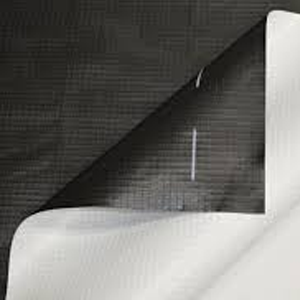Whether you’re constructing a new building or carrying out works on one that was built a long time ago, you’ll be aware just how harmful ground gases can be. Whether it’s radon, methane, carbon dioxide or another gas altogether you’re worried about, these noxious substances can cause serious problems like structural damage if an appropriate gas membrane is not put in place. In this piece, we’ll look at how to choose the right gas membrane for your project.
Consider a low permeability membrane
When installing a gas membrane, one of the things you’ll need to think about is how permeable the membrane will be. Because you’re planning to keep harmful gases out of your building, the idea is that – for severe cases – the membrane you choose will have a particularly low permeability rating after going through a testing process. You might only need to go for this, though, if your ground gas levels are noted as being particularly high. Over at our store, we have a number of complete gas barriers such as SIGMA GPS Total Gas Barrier, which is specifically designed to perform as a methane, carbon dioxide, radon ground gas, air & moisture protection system.
Think about your building’s shape and design
While you may think membranes will easily spread over all sorts of protruding corners and difficult architectural elements, it’s not necessarily the case. In fact, it’s sometimes not possible to use a normal membrane on some types of buildings – especially if there’s an awkward or wonky bit involved. That means you should think carefully about the design of the building you wish to protect before you invest in a membrane for it, otherwise you may find yourself stuck with an item you can’t properly use. There are still plenty of ways to protect your building even without a standard membrane, though, and they’re just as efficient. SIGMA”s GPS Cloaks are a great way to get around any design issues, as they are especially designed for protuberances.
Consider other needs too
Gases like radon and methane aren’t the only potentially damaging substances you will want to keep out of your building. That means there’s an opportunity to kill two birds with one stone by opting for a gas membrane that has a range of other technical capabilities too. The SIGMA GPS GRM, for example, is also water proof, meaning you’ll only need one membrane to protect your building from both liquid and gaseous elements.
Check the membrane you choose is suitable
When constructing a building, it’s important to know exactly what the potential hazards are – and finding out what ground gases are located underneath and in the vicinity is vital for safety reasons. This will usually have already been checked somewhere earlier in the process, but if it hasn’t then you’ll need to find out. Once you know, you should check that the gas membrane you opt for is one that is designed to protect against the ground gas – or gases – that you know to exist. Remember, it won’t always be immediately obvious from the membrane which gas it does and does not defend against, as that will be determined by intricate factors like how thick it is and what materials are used. For that reason, you should read the specifications very carefully. RIW”s Gas Seal Blue, for example, can defend a building against radon – but it can only defend against low levels of methane, not serious levels. That’s why it’s important to check in advance.
Don’t forget any special surface requirements
There are a whole host of different building materials out there, and when constructing a building you may well be using several different ones yourself. When it comes to installing a gas membrane in your new building, you need to make sure that the membrane you opt for is suitable for the surfaces your new building has as part of its structure. This is because while some gas membranes are suitable for use with a whole host of different material types, some can only be used with specific materials. For example, RIW”s Gas Seal Black is designed to be used on grounds which have precast or reinforced slabs of concrete, as well as block floors or those made from suspended beams. It’s important to make sure that you check up on this before you make your gas membrane investment, otherwise you may find that the one you buy is not suitable – and that could cause damage down the line. Are you looking to buy a gas membrane to protect your building against ground gases? Here at Resapol, we’ve got a huge range of gas membranes to choose from, and we’d love to help you find the one that’s right for you. Our experienced team members are fully technically trained and are ready and waiting to help you out, so please get in touch today to find out more.
